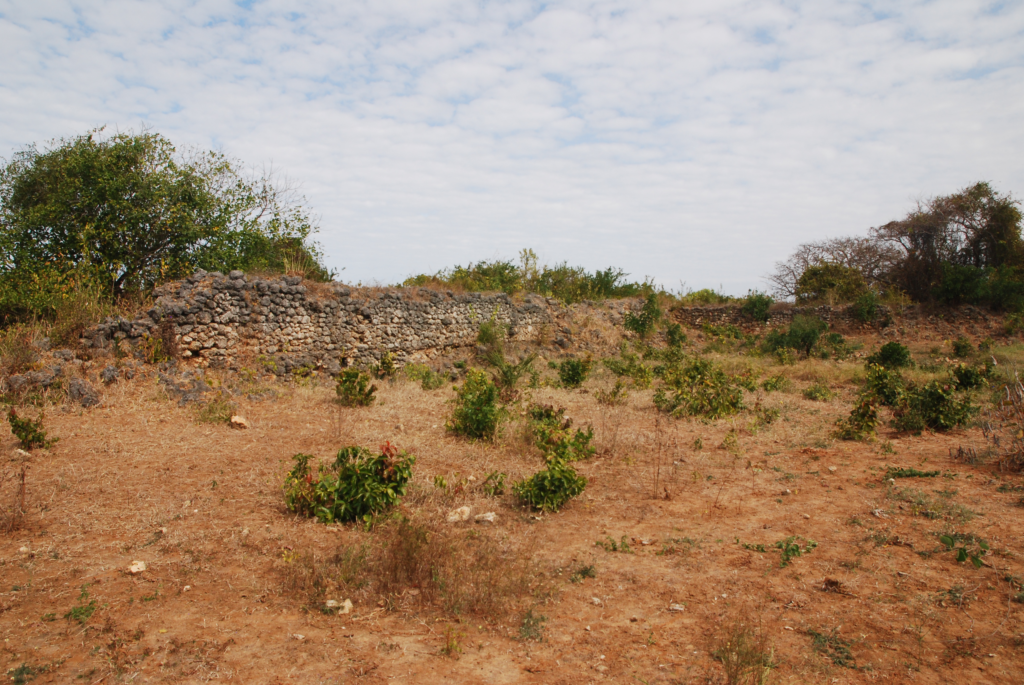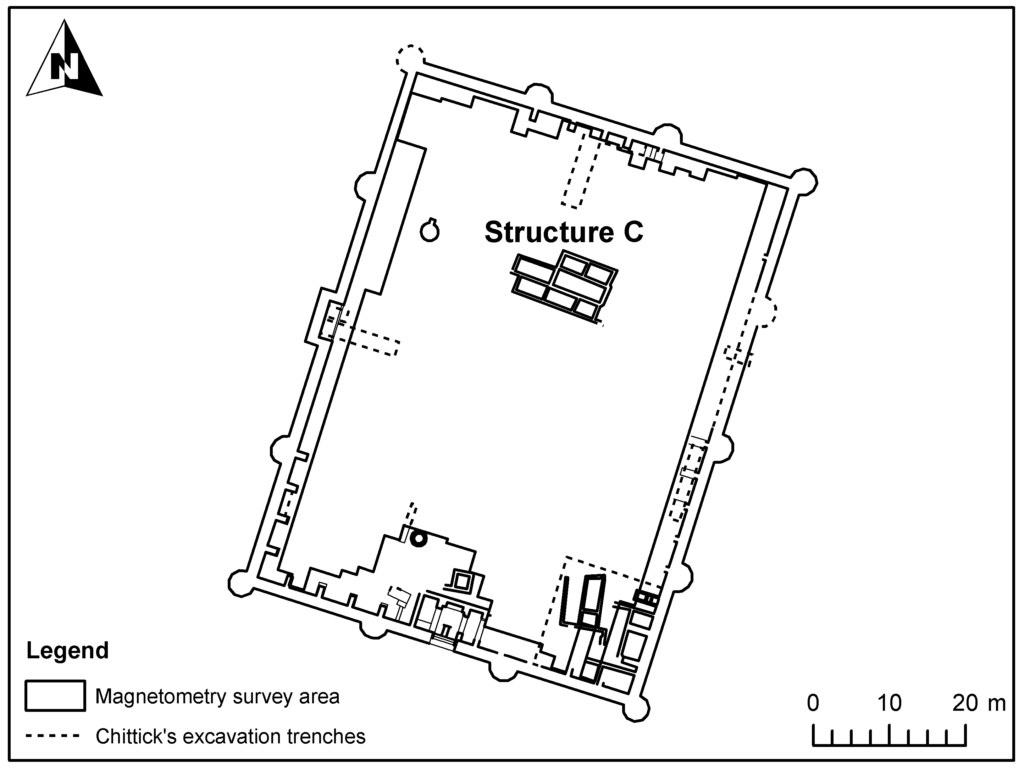Source: Slave Trading at Kilwa: Archaeological Perspectives
Kilwa was one of the main trading towns on the Swahili coast in the first half of the second millennium, and large amounts of local and foreign goods would have passed through its ports. It may also have been an important entrepôt for the trade in enslaved people. One of the fourteenth-century stone buildings at Kilwa, known as Husuni Ndogo, has been interpreted as a possible holding area for enslaved people or a caravanserai. A caravanserai was a trading inn for hosting traveling merchants and their wares, which may have included slaves. These inns were a common feature along trade routes in the Islamic world and are well-attested in historical sources. They vary in construction, but typical caravanserai were fortified structures with an open courtyard, sleeping areas for traders, and storage areas for goods and animals.
This description fits what we know about Husuni Ndogo. The structure is of an unusual design. It consists of a thick-walled enclosure with tall towers in each corner and along the walls. The walls would have been high, as much as 2.5 metres or more, while the foundations were unusually deep at some 2 metres into the ground. Such foundations are not common in Swahili architecture. Within the enclosure are several cubicle-like spaces. There is only one entrance into the enclosure, via a gatehouse opening into the enclosure through a small doorway. There is no way to confirm the hypothesis that this was a holding area for slaves or caravanserai, although all the features mentioned above indicate that the structure was built to contain something or someone, and perhaps to hinder escape. The archaeological investigations inside the structure also revealed iron production debris and a small amount of domestic waste; future excavation might help us better understand the use of space within this structure or enclosure.
We know from later historical texts that slaves were traded through Kilwa during the 16th to 19th centuries, and at one point Kilwa was one of the major slave trading towns in the area. This trade has been described by various European travelers and colonisers, and was probably a continuation of earlier practices, when slaves were both traded and used locally at Kilwa and other towns on the Swahili coast. Intriguingly, there are no known archaeological remains of any slave trading sites on the coast such as can be seen during the colonial periods. Husuni Ndogo is so far the only site with such potential.
Contributed by Henriette Rødland. This contribution CC BY-NC-ND 4.0. Figure 2 published in J. Fleisher, S. Wynne-Jones, C. Steele, and K. Welham. “Geophysical Survey at Kilwa Kisiwani, Tanzania.” Journal of African Archaeology 10, no.2 (2012), 207–220.


Discussion Questions
- Slavery is notoriously difficult to study archaeologically. What may be the reasons for this?
- How do historical texts, such as that by Ibn Battuta, help in archaeological interpretations?
Related Primary Sources
- Kilwa: Slavery on the East African Coast
- Source 1: Ibn Baṭṭūṭa on Slaves at Kilwa
- Source 3: Burzug ibn Shahriyar on Slave Trading from the East African Coast
- Zuwīla, Libya
Related Secondary Sources
- Collins, R. O. “The African Slave Trade to Asia and the Indian Ocean Islands.” African and Asian Studies, 5 (2006): 325–346.
- Pollard, E., and E.B. Ichumbaki. “Why Land Here? Ports and Harbors in Southeast Tanzania in the Early Second Millennium AD.” The Journal of Island & Coastal Archaeology, 12 (2017): 459–489.
